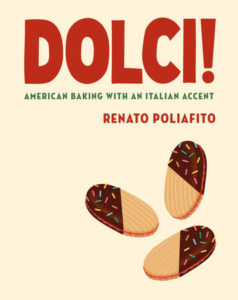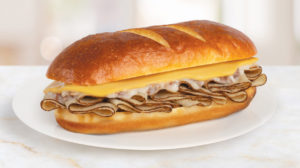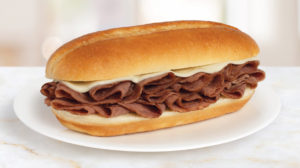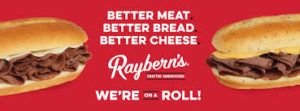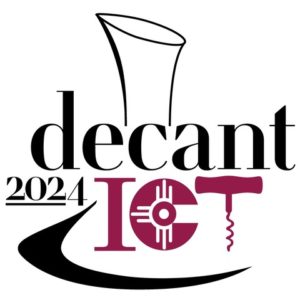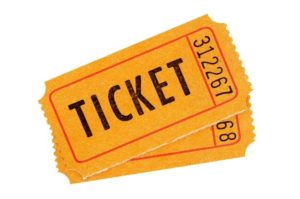Jun 29 – Full Boar BBQ
My guest this week is Jacob Lubbers from Full Boar BBQ. Outdoor cooking is a year-round part of my food life and essential to enjoying The Good Life! If your a seasonal griller, then welcome to summer and the smell of the grill. Today we will be learning about Jacob’s journey in BBQ, his company and products and then talking about two of the latest and greatest pieces of BBQ equipment available. Follow Jacob on Facebook and Instagram.
 Full Boar BBQ was started by Jacob Lubbers and a group of his high school buddies trying to keep a local backyard BBQ competition alive in their native state of Indiana. They entered the competition on a whim with an old propane smoker, a kettle grill, and a lot of determination. The guys were amazed to place in most categories – winning 3rd place overall. They were absolutely and hopelessly hooked.
Full Boar BBQ was started by Jacob Lubbers and a group of his high school buddies trying to keep a local backyard BBQ competition alive in their native state of Indiana. They entered the competition on a whim with an old propane smoker, a kettle grill, and a lot of determination. The guys were amazed to place in most categories – winning 3rd place overall. They were absolutely and hopelessly hooked.
From there, Jacob and the rest of the crew got together as much as possible to compete and have been overachieving ever since. Along the way, they have found some tricks of the trade, taken home a lot of trophies, and created some pretty great sauces and seasonings of their own. What started as a few friends not wanting a tradition to die has turned into a brand name that is trusted everywhere it is known.
Now Full Boar BBQ strives to create a new tradition of spreading the BBQ that has brought them so much joy on to others. With pit masters and backyard chefs alike in mind, their goal is to spread the gift of delicious BBQ far and wide. Jason has since relocated to Knoxville and began sharing Full Boar BBQ sauces and rubs – tested, tried, and proven in competition
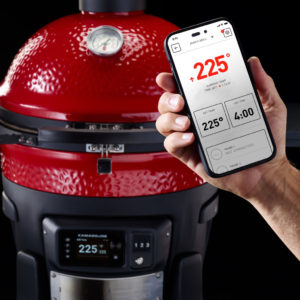 For those looking for the latest in connected grill tech this season, Masterbuilt and Kamado Joe are turning up the heat on advanced charcoal cooking. New this season are two smart grills from Masterbuilt: the AutoIgnite, and the heavy-duty Gravity 600. And the first-ever connected kamado-style grill, the award-winning Konnected Joe by Kamado Joe. Watch his video of Jacob and his Konnected Joe
For those looking for the latest in connected grill tech this season, Masterbuilt and Kamado Joe are turning up the heat on advanced charcoal cooking. New this season are two smart grills from Masterbuilt: the AutoIgnite, and the heavy-duty Gravity 600. And the first-ever connected kamado-style grill, the award-winning Konnected Joe by Kamado Joe. Watch his video of Jacob and his Konnected Joe
THE FUTURE OF OUTDOOR GRILLING
Experience a new era of ceramic grilling with the Kamado Joe Konnected Joe Digital Charcoal Grill and Smoker. The Konnected Joe makes lighting a fire easy. Simply press the Automatic Firestarter (AFS™) button to ignite your charcoal, set your desired cooking temperature with the digital Kontrol Board™ or the Kamado Joe App and let the Kontrol Fan™ do the rest. With multiple cooking functions the Konnected Joe allows you to enjoy Kamado grilling and smoking your way. Automatic cook mode provides full digital control, or try Classic mode, for the traditional Kamado experience. Available and in stock at All things BBQ here in Wichita!
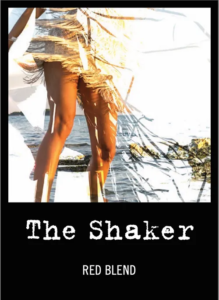 Good Life Guy’s Wine of The Week:
Good Life Guy’s Wine of The Week:
2021 “The Shaker” from Salt Wine Company
After harvest, the grapes were destemmed and allowed to cold soak. Throughout fermentation, they performed several rack and returns for optimal extraction of color and flavor. 40% Cabernet Sauvignon, 40% Syrah, 20% Merlot, aged in French oak. .Aromas: Dark and Floral, Cedar, Red Rose, Dried Cherry, Peppercorn. Palate: Wild Blackberry, Plum, and Vanilla Bean. Silky Tannins and a Seamless Finish. ABV14.2% Learn more!
92
Wine Enthusiast rating
I was impressed by this balanced blend of 40% each of Syrah and Cabernet Sauvignon, with 20% Merlot. It has a fresh and floral nose, with plenty of hyacinth, freesia, boysenberry and nutmeg aromas. A lithe and elegant texture escorts boysenberry jam, orange and ginger flavors across the pleasure finish line. — Michael Alberty


